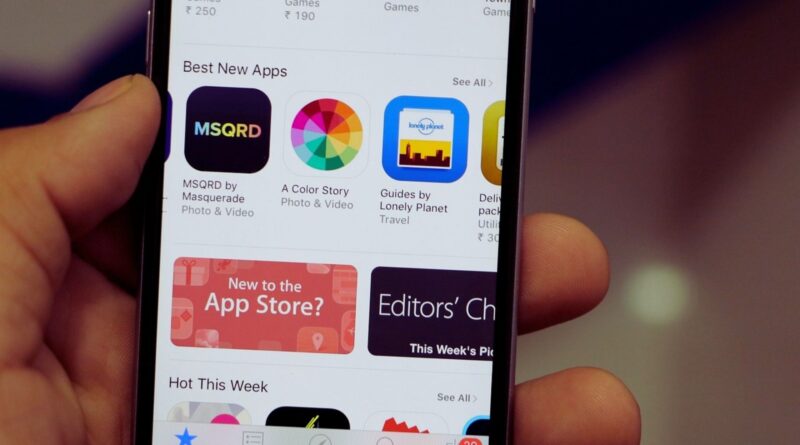The What, Why & How of App Store Optimization (ASO)?
With 6 million+ apps in both app stores, there’s literally a lot of competition that you have to tackle once you’ve decided to go digital.
And this competition raises the probability of your app not getting found in the app store.
Therefore, you need a little something called ASO to get your app optimized for the app store.
This optimization practice is the first answer you get when you ask an expert how to make a successful app.
So, in this article, we’re going to focus on what exactly is ASO?
Why is it important?
What does the process involve in getting your app to rank higher in the SERPs?
So, without any further ado – let’s start skimming!
What is App Store Optimization (ASO)?
App store optimization is similar to search engine optimization.
The difference is that SEO is implemented for websites, and ASO is implemented for applications.
Similarly, the basic idea behind implementing ASO for your app is to give it more exposure amid the 6 million+ apps surrounding it.
This exposure results in your app getting more engagement, downloads, and more. Therefore, it is safe to say that your app becomes more visible to your potential customers once you opt for ASO.
Furthermore, let it be the App Store or Google Play Store, both the stores have their own specific search algorithms. These algorithms are responsible for positioning your app.
And this aspect is extremely critical for your app’s success in the digital world. Although several other factors play an integral role in the success of your app.
Still, ASO is an integral part of your overall app project that you must consider.
Furthermore, here are some of the key aspects that ASO primarily focuses on to get your app indexed and ranked in the store:
- App name and title
- Keywords
- Description
- Subtitle
- Total number of downloads
- Ratings and reviews
Let’s start covering each stage of ASO stepwise to learn why it matters and what it involves.
ASO Strategies to Rank Your App In The App Stores
With the intro and definition of app store optimization out of the way, it is time to get started working on getting your app ranked in the app stores.
So, here are some of the main factors that enable you to get your app ranked in the app stores.
Here are the primary components that enable you to make the largest impact:
1. Your App’s Name
Your app’s name is probably the biggest factor in all the other aspects.
Your name would play an integral role in all of this, from attracting massive traffic to helping your app rank higher in the results.
So, spend time when you’re selecting the name for your app because changing your name too often can be detrimental.
Furthermore, once you’ve selected your app’s name, you’ll start getting reviews for your app (after marketing, of course).
If you change the name at this moment, spreading the word about your app will become a little complicated for your users.
Name changing is something you do once you’ve got a user base of millions.
2. Your App’s Title
The title of your app is another critical aspect that’ll help you draw traffic to your app. In fact, optimizing a keyword in the title increases search ranking by 10.3%.
So, it is implied that you need keyword optimization for an app to increase your appearances in the SERPs.
However, you need to be a little careful and not opt for keyword stuffing because this approach is a surefire way of getting banned.
Therefore, be smart when it comes to keyword optimization and follow the best practices to ensure optimal effects.
I would also recommend that you conduct research to analyze what your competitors are doing and then keyword optimize your search appearance.
3. App Description Optimization
App descriptions are read by algorithms integrated within the app stores. By reading the description and analyzing the relevancy of your app, application stores give your app a designated position.
However, if you judge from the user’s perspective, the entire purpose of the description changes.
When you’re writing for your audience, you need to explain the benefits, USPs, and application features.
Once the user hops on to your app, he/she should be greeted with a detailed description explaining what your app is all about.
From the above statements, you may be thinking that you’ve got a lot of space to write and explain whatever you want, right?
Well, unfortunately, you don’t!
There’s a limit to everything you do while you optimize your app, and here you’ve got a space of 252 characters to entice your audience and search engines.
So, keep the description short, explain everything clearly, and integrate keywords strategically to get your app loved by search engines and users.
Avoid fluff; keep the content to the point.
Also, you can implement that A/B testing approach to determine what’s working and what’s not.
4. Keywords Metadata
This feature is only available if you’re uploading apps to the iOS store.
So, in this section, I will specifically give you information on how you can add keywords for your app in the App store.
Apple provides you the amazing facility of entering keywords that are separated by commas.
The limit is 100 characters, so you have to strategically streamline the keywords you will incorporate in your metadata.
Obviously, you already know that the purpose of entering metadata is to help you get your app discovered in the app store.
A pro-tip here would be to avoid entering the exact keywords that you’ve added in your title just to avoid duplication.
Additionally, you can also go for keyword analysis by leveraging Apple Search Ads.
Furthermore, there are other tools that you can leverage as well to optimize your app store’s appearance.
5. App Subtitle
There’s a title, and then there’s a subtitle that you need to optimize to get results for your app.
Now, the subtitle also needs to be carefully writen to ensure maximum effectiveness.
Plus, the character limit is 30.
Therefore, the subtitle needs to engage the audience within this limit.
However, look on the bright side!
This part can also be considered to incorporate more descriptive keywords for your app to be found.
Be sure to give your app a cleaner look that also works effectively.
It would’ve been great if there was more space available to include more keywords, but unfortunately, that’s out of our control!
So, we have to manage the keyword density and effectiveness strategically.
6. App Reviews & Ratings
This is the part where you’ll learn the importance of recommendations, reviews, and ratings.
In fact, reviews play an integral role in influencing the customer buying decision.
Hence, they’re super important for building credibility and getting people familiar with your app or brand.
Additionally, you may be thinking about what ratings or reviews have to do with your app store’s ranking, right?
Well, apps with the highest ratings and positive reviews tend to send signals to the search algorithm of stores.
Therefore, enabling your app to rank higher in the result.
This quickly raises a question concerning that you only need positive reviews and ratings or a mix of both positive and negative would work.
Let’s get to a conclusion with two questions.
Would you download an app after seeing its negative reviews and ratings?
Or, if you were a search algorithm, would you rank an app after seeing its negative reviews and rating?
I’m sure your answer to both of the questions would be a big ‘NO’ so, it’s pretty clear that you need positive ratings and reviews to get your app ranked.
The average rating of apps in the App Store is 4 stars, so you have to maintain this rating to get the best results.
Another tip would be to reply to negative reviews.
People often consider not to respond to the negativity that surrounds their product or service, but this action further increases the negative notion.
Plus, your users may have had a bad experience with your app due to bugs, glitches, or issues.
Therefore, their feedback is valuable to you so that you can fix your app.
Plus, when you respond to them, you give them a feeling of being taken care of. They think that you’ve heard what they had to say and their opinion matters.
Hence, you retain them by fixing the problem and getting them onboard again while attracting new users.
7. App Download
Finally, the downloads represent how useful your app is to the users that haven’t downloaded it.
I mean, just look at the millions of downloads of Instagram or Facebook; these stats actually showcase the app as a trend that everyone should adapt to.
Moreover, the fact is that even if an app has more than a million downloads all over, your app can beat its ranking by getting more downloads this month.
So, how can you do that?
Start marketing your app or if you’re already marketing it, improve your marketing strategies and tactics.
You can improve exposure, awareness, appeal, ratings, and your social media presence through marketing.
And in this way, eventually, you’ll end up having more downloads and positive results.
Over To You
That’s all for now!
After skimming through the entire blog, I’m sure you’ve understood the importance of ASO.
However, suppose you’re opting for ASO all by yourself. In that case, you’ll be needing to monitor it constantly for a specific time.
Also, there are several other aspects mentioned above that you’ll have to consider while implementing ASO.
So, to reap the rewards of ASO, I would recommend that you let the pros do their job while you start focusing on other aspects of your app.
There are literally thousands of app agencies that are offering ASO services. Select the best one out of them and get started.



![Pictory AI Review (2023) Make $100 A Day [No Falsehood!]](https://marketingv20.com/wp-content/uploads/2023/02/Pictory-AI-Review-2023-Make-100-A-Day-No-Falsehood-390x205.webp)
